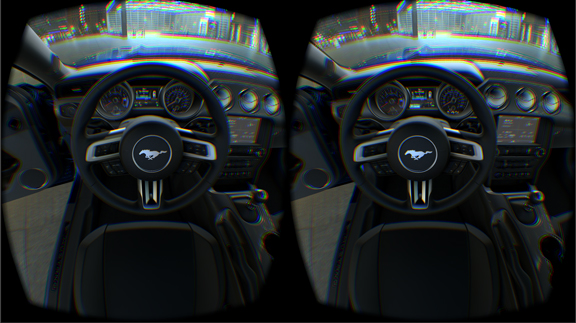
Incorporating stereoscopic effect into virtual reality and augmented reality demands more computing power. Such applications usually rely heavily on the GPU.
Latest News
March 4, 2016
 Incorporating stereoscopic effects into virtual reality (VR) and augmented reality (AR) demands more computing power. Such applications usually rely heavily on the GPU. (Image courtesy of NVIDIA)
Incorporating stereoscopic effects into virtual reality (VR) and augmented reality (AR) demands more computing power. Such applications usually rely heavily on the GPU. (Image courtesy of NVIDIA)Virtual Reality, or VR, was once viewed as a gimmick to boost gaming experience, but not quite ready for professional use. Sure, it could give you an immersive digital world populated with zombies and aliens so you could hack and shoot your way through a first-person shooter. But in such VR environments, the rules of physics were suspended to exaggerate the explosions or to let you execute humanly impossible moves, making them unsuitable for realistic engineering simulation.
Michael Kaplan, who oversees NVIDIA‘s media & entertainment business development and professional VR product line, thinks playtime is over for VR, in a manner of speaking. The technology—both hardware and software—are now mature enough for serious simulation for medical, engineering, manufacturing, and military use.
“The blurring of entertainment and professional VR began with concerts, sporting events, and retail. Then it moved to medical, defense, and automotive,” said Kaplan. “Once it was just neat to have VR. Today, some users are finding that they need to have it.”
Many in the general public tend to use VR and AR (Augmented Reality) interchangeably, but Kaplan, like many in the high-tech sector, makes a clear distinction between the two: “VR immerses you in a virtual environment; AR brings virtual elements into your reality,” he said.
Both VR and AR involve digital objects and environments constructed in pixels. However, in VR, your world tends to be exclusively virtual; in AR, your physical surrounding is augmented with digital assets. VR demands heavy processing power because of the need to render and display photorealistic 3D scenes. VR applications benefit tremendously from the GPU’s parallel processing capacity.
Kaplan pointed out, “A lot of car makers—like Honda, for example—use GPU-powered realistic crash simulation in product development. With a requirement for high refresh rate, the technical needs start to scale up with those using VR in cave-like environments. We have a suite of products that help you do that. One of them is Iray.”
In VR caves (engineering software maker Dassault Systemes maintains one at its Boston headquarters), the virtual world is often presented in a stereoscopic display, adding a sense of depth to the experience.
“Calculating how light rays bounce off objects [a specialty of NVIDIA Iray] is very compute-intensive. If you have to render it for left-eye and right-eye views [to enable stereoscopy], it gets even more intense,” said Kaplan.
Low-res VR, a digital world constructed with low-polygon models but accurate physics for engineering simulation, is today accessible to even desktop users, Kaplan observed. “But we need to get beyond that and make everyone’s VR photorealistic, while keeping the frame rate acceptable. That’s technically challenging,” he added.
Competition for VC (venture capital) funds in VR is now getting harder. The field is crowded with new startups developing VR-enabled applications. “It’s the Wild West,” Kaplan noted.
With GPU brands aimed at the entertainment and professional markets, NVIDIA straddles both fields. Its GeForce GPU line is for gaming, whereas its Quadro line is for the professional VR. The company also offers Tegra processors for mobile and embedded applications.
The upcoming NVIDIA GPU Technology Conference (GTC 2016) features several tracks devoted to VR.
DE is a media partner for NVIDIA GTC 2016. DE editors will be reporting breaking news from the conference.
Subscribe to our FREE magazine, FREE email newsletters or both!
Latest News
About the Author
Kenneth Wong is Digital Engineering’s resident blogger and senior editor. Email him at [email protected] or share your thoughts on this article at digitaleng.news/facebook.
Follow DE





